Are you wondering how to clean roach droppings? Cockroaches are among the most unwelcome guests in our homes. They not only carry diseases but also leave behind an unpleasant calling card – their droppings.
These tiny fecal pellets can be a nuisance, and cleaning them up is essential for both hygiene and peace of mind. In this article, let’s understand the physical characteristics of roach poop, where you can find it, how to clean it, and why it’s crucial to do so.
What Does Cockroach Poop Look Like
Cockroach droppings, also known as fecal pellets, are small but significant indicators of the presence of these pests in your home. Understanding the physical characteristics is crucial to identify cockroach poop for effective pest control:
Size and Shape
Roach droppings vary in size depending on the cockroach species, but they are generally quite small, resembling tiny black or dark brown specks. On average, they range from 1/16 to 1/8 inch in length, making them similar in size to grains of black pepper. However, German cockroach droppings tend to be the smallest, while American cockroach droppings are larger.
Color
The color of roach droppings is typically dark brown or black. This dark hue results from the breakdown of food and other organic materials within the cockroach’s digestive system. The coloration often helps distinguish roach feces from other debris.
Texture
Roach droppings have a granular or pellet-like texture. Unlike some other pests’ droppings, such as rodents, roach droppings are not soft or moist. They are dry and solid, making them relatively easy to clean up but also prone to becoming airborne when disturbed.
Distinctive Odor
One of the most distinctive characteristics of roach droppings is their unpleasant odor. The odor can be quite strong and is often described as musty or oily. This odor may not be immediately noticeable in small quantities but can become increasingly pungent in areas with a high roach population.
Consistency and Composition
Roach droppings are composed of both feces and urine. Unlike mammals, roaches do not urinate separately; instead, their waste is excreted in a solid form. This unique combination of fecal matter and urine contributes to the strong odor associated with roach droppings.
If you encounter what you suspect to be roach droppings in your home, it’s essential to investigate further and take action to address the potential pest problem promptly.
Where Can You Find Roach Droppings?
Roach droppings can be found in areas where roaches frequent. These pests are nocturnal and tend to hide in dark, warm, and damp places during the day.
Common hiding spots include kitchen cabinets, behind appliances, in cracks and crevices, and under sinks. If you suspect a roach infestation, inspect these areas for droppings.
What to Do If You Spot Only Droppings but No Roaches
Finding roach droppings without seeing the roaches themselves can be unsettling. It may indicate that roaches are hiding nearby or that they were present at some point. In either case, it’s essential to take action.
Thoroughly clean the affected area, seal any cracks or crevices where roaches may be entering, and consider using traps or contacting pest control for professional assistance.
How Droppings Might Indicate a Roach Infestation
Roach droppings are a telltale sign of a roach infestation. If you consistently find fresh droppings in multiple locations, roaches are likely active in your home.
Keep in mind that a single sighting of droppings might not necessarily indicate an infestation, but it’s a reason to stay vigilant and investigate further.
Beware of Health Hazards of Roach Droppings
Cockroaches are not just unsightly pests; they can pose serious health risks, and their droppings are a significant contributor to these hazards.
Understanding the health risks associated with roach droppings and the importance of thorough cleaning is essential for maintaining a safe and healthy living environment.
1. Allergies and Asthma Triggers
One of the most significant health hazards associated with roach droppings is their potential to trigger allergies and exacerbate asthma symptoms.
Roach droppings contain allergenic proteins, which are proteins that can induce allergic reactions in susceptible individuals.
When these proteins become airborne as particles or dust during cleaning or simply by moving around, they can be inhaled and cause allergic responses.
Common allergic reactions to roach droppings include:
- Respiratory Issues: Inhaling airborne particles from roach droppings can lead to coughing, wheezing, chest tightness, and difficulty breathing, particularly in individuals with pre-existing respiratory conditions like asthma.
- Skin Irritation: Skin contact with roach droppings or contaminated surfaces can cause skin rashes and itching in some people.
- Eye Irritation: Contact with allergenic particles may also lead to eye redness, itching, and irritation.
- Runny Nose and Sneezing: Exposure to roach allergens can trigger cold-like symptoms, including a runny or stuffy nose and frequent sneezing.
2. Disease Transmission
Roaches are known carriers of various pathogens, including bacteria, viruses, and parasites, which they can pick up from the unsanitary places they frequent, such as sewage systems and garbage dumps.
While roach droppings themselves may not directly transmit diseases, they can indirectly contribute to disease transmission by contaminating surfaces and food.
Common diseases associated with roaches include:
- Salmonella: Roaches can pick up Salmonella bacteria and then transfer it to food and food preparation surfaces through their droppings or body parts. Ingesting contaminated food can lead to food poisoning.
- coli: Similar to Salmonella, roaches can carry and transmit E. coli bacteria, leading to gastrointestinal infections if contaminated food or surfaces come into contact with the mouth.
- Allergen-Related Illnesses: Prolonged exposure to roach allergens can lead to chronic health conditions in some individuals, such as persistent asthma, chronic bronchitis, or other respiratory diseases.
A Step-by-Step Guide to Cleaning Roach Droppings
Cleaning roach droppings is a critical step in maintaining a hygienic and pest-free living environment.
Here is a step-by-step guide to cleaning roach droppings, including specific instructions for different surfaces such as walls, books, wood, and cabinets:
Step 1: Gather Your Supplies
Before you begin, gather the following supplies:
- Disposable gloves
- Disposable mask
- Safety goggles (optional)
- Paper towels or disposable wipes
- Plastic bags
- Disinfectant cleaner
- A vacuum cleaner with a HEPA filter (for some surfaces)
Step 2: Protect Yourself
Wear disposable gloves to avoid direct contact with roach droppings. You may also consider wearing a disposable mask and safety goggles, especially if you are dealing with heavy infestations or have respiratory sensitivities.
Step 3: Remove Droppings
Using a paper towel or disposable wipe, gently pick up the roach droppings, taking care not to crush them. Fold the paper towel or wipe around the droppings to avoid direct contact.
Step 4: Dispose of Waste
Place the paper towel or disposable wipe with the droppings in a plastic bag. Seal the bag securely to prevent any airborne particles from escaping. This step is crucial to avoid recontamination.
Step 5: Clean the Area
Using a disinfectant cleaner, thoroughly clean the area where you found the droppings. Pay close attention to cracks, crevices, and surfaces where roaches may have left behind allergenic proteins or contaminants. Wipe down the area with a clean cloth or disposable wipe.
Step 6: Vacuum (for Some Surfaces)
For surfaces like carpets, upholstery, or drapes, use a vacuum cleaner equipped with a HEPA filter to remove any remaining particles or allergens. Vacuuming can be especially effective for larger areas or soft materials that are difficult to clean with wipes.
Get Rid of Roach Droppings from Different Surfaces
How to clean roach poop off walls
- For painted walls, use a damp cloth or disposable wipe to clean the droppings gently.
- Avoid scrubbing too vigorously, as this may damage the paint.
- If the droppings are stubborn, you can use a mild soap solution, but be sure to rinse the area afterward.
How to clean roach poop off books
- Remove the affected book from the shelf and gently shake it to dislodge any loose droppings.
- Wipe the cover and pages with a dry, lint-free cloth.
- If the book is heavily contaminated or valuable, consult a professional book conservator for advice on cleaning and restoration.
How to clean roach poop off wood
- For wooden surfaces, such as furniture or flooring, start by gently scraping off any dried droppings with a plastic scraper or a soft-bristle brush.
- Clean the area with a mild wood cleaner or a mixture of water and vinegar.
- Dry the wood thoroughly to prevent warping or damage.
How to clean roach poop off cabinets
- Remove the contents of the affected cabinet.
- Wipe down the interior with a disinfectant cleaner.
- Pay special attention to hinges, corners, and seams where roaches may have left droppings.
Pro-tip: After completing the cleaning process, wash your hands thoroughly with soap and water. Dispose of all cleaning materials, including gloves, masks, and wipes, in an outdoor trash bin to prevent recontamination.
Frequently Asked Questions
1. Can roach droppings make you sick?
Yes, roach droppings can indeed pose health risks. They contain allergenic proteins, which, when inhaled, can trigger allergies and asthma in some individuals. These allergens can cause symptoms like coughing, wheezing, chest tightness, and difficulty breathing, especially in those with pre-existing respiratory conditions.
2. What should I do if I find roach droppings in my kitchen?
- If you discover roach droppings in your kitchen, it’s essential to take immediate action to address the issue:
- Clean Thoroughly: Clean the affected area and surfaces with a disinfectant cleaner. Pay close attention to cracks, crevices, and areas near food preparation and storage.
- Seal Cracks and Gaps: Identify and seal any cracks, gaps, or entry points where roaches may be entering your kitchen.
- Store Food Properly: Keep food in airtight containers to prevent contamination.
- Practice Good Hygiene: Maintain cleanliness in your kitchen by promptly cleaning up crumbs, spills, and food residues.
- Consider Pest Control: If the problem persists, consider using roach baits or traps or contacting a pest control professional for effective extermination.
3. Do roaches leave droppings in beds and clothes?
Yes, roaches can leave droppings in areas where they infest, and this can include beds, clothes, and personal belongings.
Roaches are nocturnal and tend to hide in dark, warm, and secluded spaces during the day. If they have established a presence in your bedroom or closet, they may leave droppings in these areas, potentially on your bedding, clothing, or stored items.
4. Can I use bleach to clean roach droppings?
Yes, bleach can be used to clean roach droppings effectively, especially for disinfection purposes. To do so:
- Mix one part bleach with nine parts water to create a solution.
- Wear protective gear, including gloves and a mask, and ensure adequate ventilation in the area.
- Use the solution to clean the affected surfaces, such as countertops or floors.
- After cleaning, rinse the area thoroughly with clean water to remove any residual bleach.
- Be cautious when using bleach, as it can have a strong odor and may discolor or damage certain materials or surfaces.
5. How can I prevent roaches from returning?
Preventing roaches from returning involves a combination of sanitation, maintenance, and pest control measures:
- Fix Leaks: Repair any water leaks promptly, as roaches are attracted to moisture.
- Seal Cracks and Gaps: Identify and seal any cracks, gaps, or openings in your home’s structure, especially near entry points.
- Use Roach Baits and Traps: Consider using roach baits or traps strategically placed in areas where roaches are likely to roam.
- Consult a Professional: If you have a persistent or severe infestation, it’s advisable to consult a pest control professional for thorough extermination and prevention recommendations.
6. When should I call a pest control professional?
You should consider calling a pest control professional when:
- You have a persistent roach problem that does not improve with DIY methods.
- The infestation is severe, with a large number of roaches.
- You are unsure about the extent of the infestation or where roaches are hiding.
- Roaches are causing significant damage or health concerns in your home.
- A professional pest control service can assess the situation, implement effective control measures, and provide guidance on long-term prevention to keep your home roach-free.
Final Thoughts
Cleaning roach droppings is not only about aesthetics but also about safeguarding your health and home.
Be proactive, and if you suspect a roach infestation, take the necessary steps to address it promptly. A clean home is a healthy home, free from the unwelcome presence of these persistent pests.


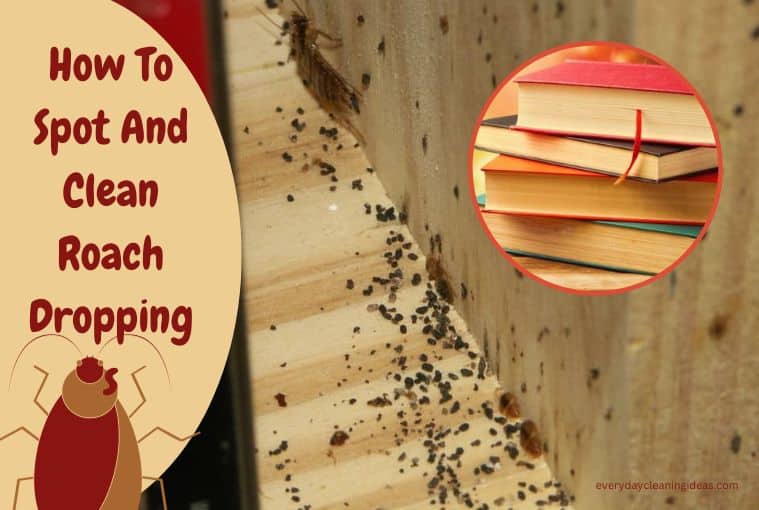
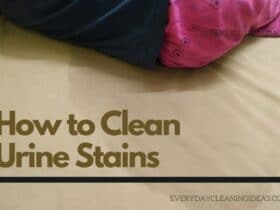
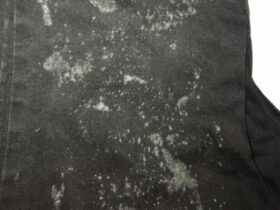


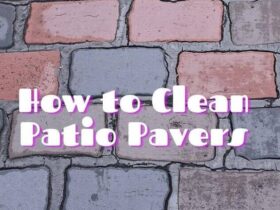
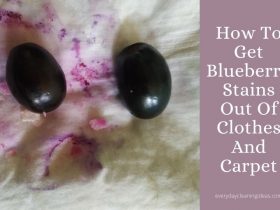
Leave a Reply
View Comments